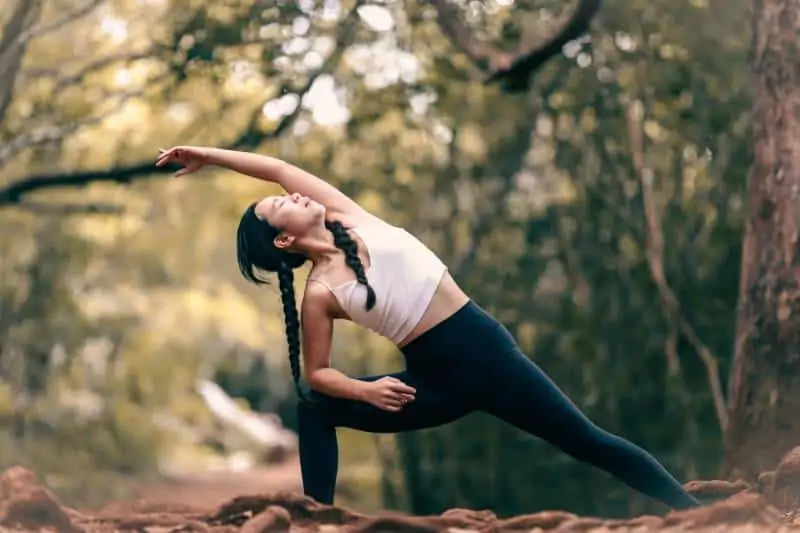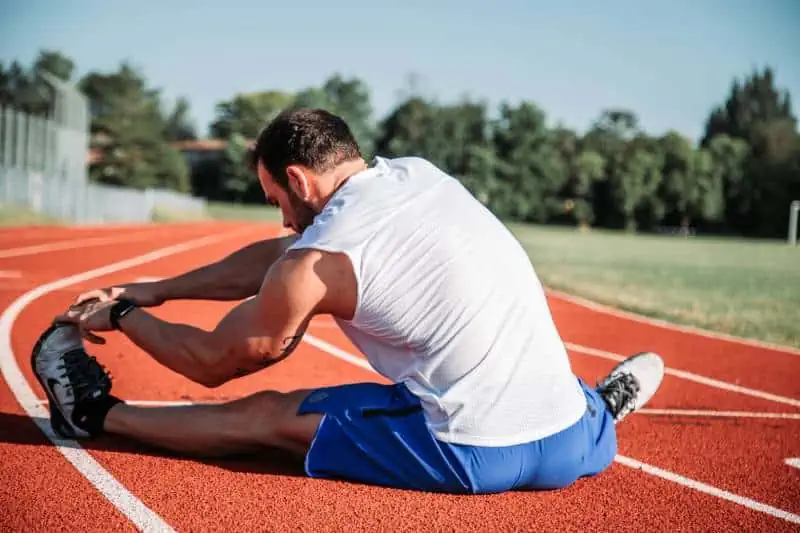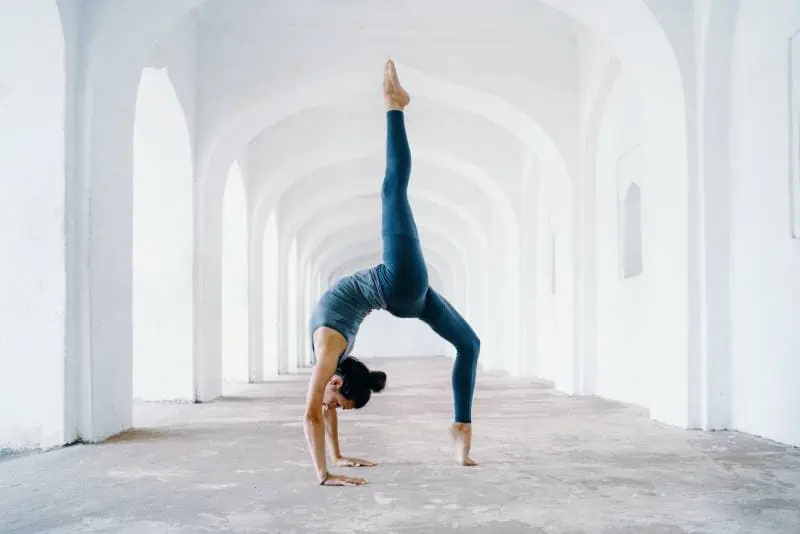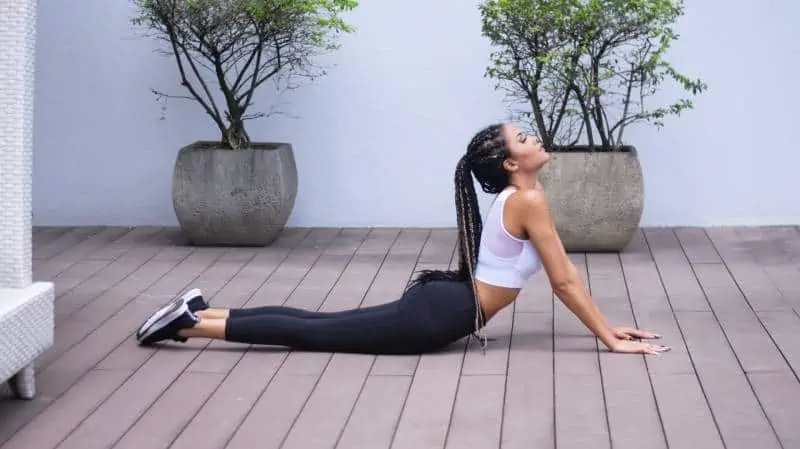From the outside, yoga and stretching may look like similar exercises and even share some of the same benefits. For example, both are ideal for anyone who wants to stay healthy, develop greater body awareness, and improve flexibility.
However, yoga and stretching are two very different practices with individual purposes, so they should not be used interchangeably. By knowing the differences between yoga vs. stretching, you’ll know when it is best to use each exercise program and thus receive both yoga and stretching’s wonderful benefits.
So let’s break down yoga vs. stretching and reveal when and how often you should do each practice.
Contents
How is yoga different from stretching?

When thinking about the main differences between yoga vs. stretching, most people understand that yoga benefits more than our physical health. For example, a basic stretching routine can result in increased flexibility, quicker recovery time, and better athletic performance. However, yoga classes can also positively impact your mental and emotional states, with benefits such as stress relief and mental clarity.
So read on to discover what makes yoga and stretching two very different forms of exercise.
Yoga requires breath connection
All good yoga instructors will continuously cue their students to focus on breathing. The breath is the main difference between yoga and stretching, as the breath connection is what cultivates the mind-body connection, which results in mental health benefits. In fact, it’s so crucial that if you are doing yoga without any awareness of your breath, you’re practically just doing stretching exercises.
So how do you breathe during yoga? It depends on the style; dynamic styles like vinyasa follow a breath-to-movement form where you inhale into one pose and exhale into the next. Or, in methods like Hatha yoga, you may hold a pose for five breaths before releasing and moving into the next one.
Regardless of the style, you always breathe in and out through the nose during yoga. Each breath should also be complete, coming from the belly rather than the chest (known as the deep diaphragmatic breath).
Moreover, your yoga instructor will likely cue you to focus on the breath every time you pause in a pose and in between asanas. Focusing on the breath helps to calm and quiet the mind, and the proper breathing technique of inhaling and exhaling through the nose allows you to maintain your energy and reduces fatigue.
It’s also worth noting that part of a traditional yoga class involves breathing exercises (known as pranayama) performed in a seated or reclined position. There are several different breathing techniques with contrasting benefits. For example, some are calming, and some are energizing.
A yoga class incorporates mindfulness
As we mentioned, focusing on breathing in yoga helps to calm the mind. If you start your yoga practice with a busy mind full of repetitive and negative thoughts, you will struggle to focus on what you are doing. However, after several breaths, you may already notice your mind quieting down, which helps you become more present.
Presence is essential in yoga as it helps you become aware of how your body feels in the poses. When you are focused on your body, you notice if there is pain and back away, rather than pushing through and injuring yourself.
Over time, this mindfulness doesn’t just help with injury prevention; it also allows you to go deeper into stretches. This is because the more aware you become of your body, the easier it is to determine the difference between tension that can be moved through and pain that cannot.
Yoga is rooted in spirituality
Another of the main differences between yoga vs. stretching is the purpose of the two practices. Stretching is a gentle, low-impact form of exercise with purely physical benefits such as improved muscular control, flexibility, and range of motion. However, yoga is an ancient practice with deep roots in spirituality, particularly Hinduism.
Yoga originates from India and dates back to the pre-Vedic era when Hindi monks would use yoga to advance along their spiritual path. Traditionally, the aim of yoga is to reach enlightenment. The physical exercise of stretching (known as asana) was just one component of the practice and one of the eight limbs of yoga.
The other seven limbs include pranayama (special breathing instructions), meditation, and moral codes known as the Yamas and Niyamas.
A note on different yoga styles
There are many different styles of yoga, some of which are more similar to stretching than others. For example, yin yoga involves long-held deep stretches focusing primarily on the lower body. Yin yoga poses are mostly static stretches, but you hold them for 2 to 5 minutes, much longer than general stretching.
Other yoga styles such as vinyasa and Ashtanga are more dynamic and fast-paced. Along with holding static stretches, you move with each breath in a fluid, dance-like motion. These active yoga styles also include upper body and core strengthening exercises that shorten the muscles instead of lengthening them.
After strengthening a muscle in a yoga class, you stretch it out, bringing the body into balance. This makes the practice a part stretching, part cardio, and part strength training session; thus, it is a full body workout.
Benefits of stretching exercises

- Improved mobility of the entire body
- Improved flexibility
- Better circulation
- Faster recovery times
- Reduces the chance of injury
- Improves your performance in other workouts
- It can help specific ailments like back pain
When to stretch
Stretching should form the end of any fitness routine as it helps to increase blood flow to the muscles to quicken recovery and improve your performance next time. As there are stretching exercises for all muscle groups, stretching will help you whether you are a swimmer, weight lifter, or martial artist.
Aside from injury prevention, improved flexibility is another reason people stretch after working out. Many types of exercise strengthen the muscles, which anatomically means the muscles shorten. Over time, the muscles become strong, resulting in that desirable ‘ripped’ look. However, if you do not stretch muscles after strengthening them, they lose flexibility, becoming tight and tense. Thus, performing stretches after each workout is essential to maintaining a full range of motion.
You should also perform stretching exercises as a short warm-up. In our fast-paced, modern lives, we carry a lot of tension in our bodies due to stress. When are stress levels are high, our bodies feel tight and restricted. Thus, taking a few minutes to stretch before your workout will loosen your body up and help you release stress, making you more mentally prepared.
Regardless of whether you are an athlete or a gym goer, it is recommended to stretch daily, not just when you exercise. As we age, we naturally lose flexibility and range of motion, but daily stretching can significantly slow this decline. So even if you don’t work out, taking five to ten minutes to stretch every day will still considerably impact your overall health.
Benefits of yoga practice

- Reduces cortisol levels, a.k.a. the stress hormone
- Stimulates the parasympathetic nervous system, also known as the relaxation response
- Increases lung capacity thanks to the proper breathing technique
- Increases muscle strength
- Improves balance
- Increases flexibility and mobility
- Promotes mindfulness and presence
- Calms the mind, reducing anxious, negative, and repetitive thoughts
- Increases mental clarity and focus
- Can release emotional blocks/trapped emotions
- Can evoke deeper spiritual connection/awareness
When to do yoga
As yoga has many similar benefits to stretching, you can practice yoga to cool down after exercising and as a way to reduce muscle stiffness between workouts. However, yoga is mind-body medicine, an essential self-care practice that anyone can do and benefit from, including people that don’t work out.
Yoga serves multiple purposes; you can practice it to cultivate energy in the morning, to unwind and de-stress after a busy day, to prepare for meditation, and much more. Along with doing yoga for any occasion, you can make your practice as short or as long as you want. For example, maybe you decide to spend 15 minutes on your yoga mat each morning to wake the body up with some sun salutations. Then, you might like to dedicate 30 minutes to a relaxing restorative yoga practice in the evening.
How often you do yoga will depend on your goals and your lifestyle. If you have the time, practicing yoga every day is ideal. However, if you lead a busy life, aiming for two to three times a week is enough to see the incredible benefits of the practice. Moreover, suppose you are practicing yoga for the first time. In that case, we recommend starting with two times a week and slowly increasing the frequency.
Final thoughts on yoga vs. stretching
Yoga and stretching ooze many benefits, and both a good stretch and a yoga class will leave you feeling fantastic. Therefore, in general, it’s best to combine both yoga and stretching into your routine. Still, depending on your needs and goals, you may wish to prioritize one.
If you’re a professional runner or gym junkie, stretching should be a non-negotiable part of your fitness regime. However, yoga is ideal if you’re looking for a way to de-stress and unwind while improving your fitness levels.


